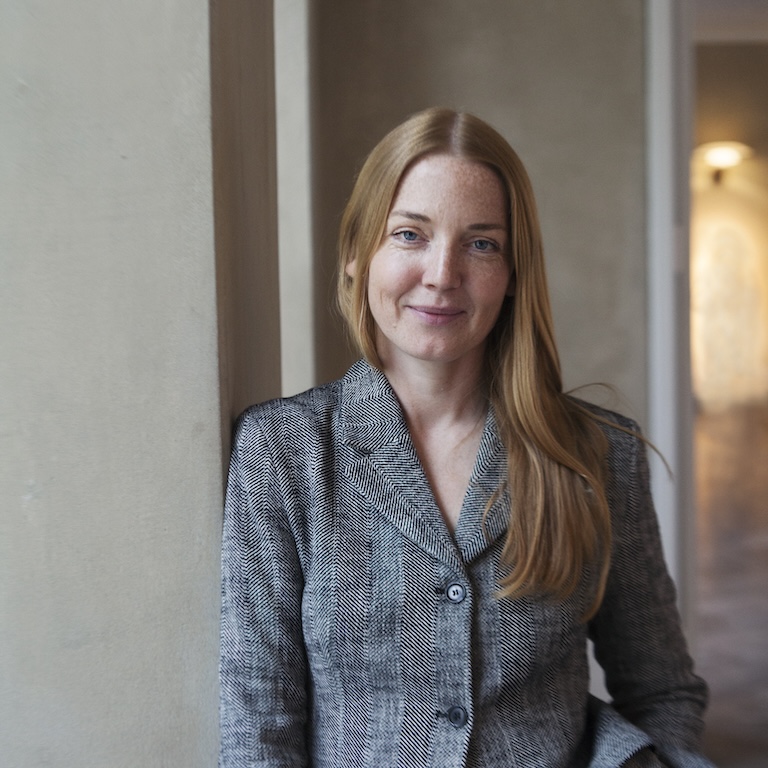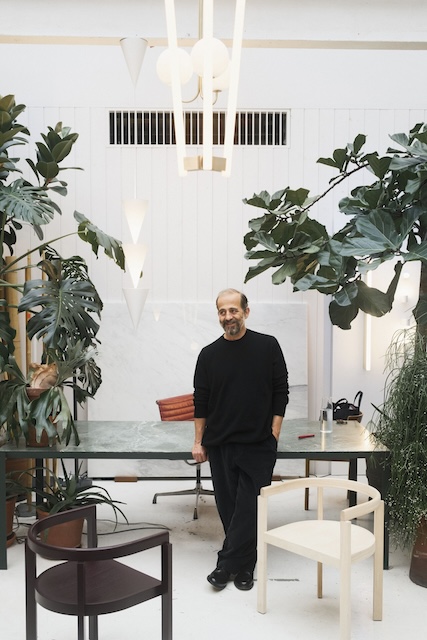The Playful Life of an Alchemist
We visited head chef Rasmus Munk at his two Michelin star restaurant, Alchemist, to find out how the playful and fascinating concept was born, and why it has captivated a global audience.
The ancient alchemists fused philosophy, natural science, religion and the arts to create a new understanding of the world. In a similar way, Rasmus Munk’s “Holistic Cuisine” at the two Michelin star restaurant Alchemist aims to redefine and broaden our understanding of dining. Alchemist is not only fine dining, but an adventurous journey that draws upon elements from the worlds of gastronomy, theatre and art, as well as science, technology and design, to create an all-encompassing sensory experience. In the following conversation with co-owner and head chef Rasmus Munk, we learn how the playful and fascinating Alchemist concept was born, and why it has won the acclaim of guests visiting from around the world.
How would you describe the essence of Alchemist?
It's essential to combine both humour and seriousness. It can undoubtedly get quite nerdy when we put all our tools and elements into play, but we try to balance this with humour. We push people a little bit and take them to the edge. It is exciting because it creates a restaurant experience people are not used to. We imprint some memories in the guests that they will remember 5-6 years after eating at the restaurant. Therefore, it is essential that we have some seriousness—that there is an underlying agenda, and that what we do doesn’t become just about fun and games.

How did that approach come about, and where does it come from?
I started in Jutland, participated in many cooking competitions, and was head chef at The Tree Top restaurant. I cooked for food critics and foodies there, but it was with one hand behind my back. I just followed the current formula for success in the industry which was new Nordic cuisine: you should find someone who makes lovely pottery, and then you should go down into the woods and pick some herbs. If you did those things, then you had the recipe for success. To me, that didn’t feel right in any way. I wanted to make a restaurant that could make a difference. I wanted to use food to communicate. That's how I started Alchemist.
I always think that I have had an inner desire to give the guests a good experience and include an element of provocation. I found it fun to serve something resembling small worms served as petit fours or chicken feet in the Tree Top restaurant in my early days. But it was not something that had a deeper meaning or a story behind it. It was to provoke a little, to serve something people were not used to and get them to stop for a bit. Of course, this created some publicity, and these are dishes that many guests still remember. I think it’s exciting that it’s possible to move people emotionally with food in the same way as with design and art.
What environment did you grow up in?
I grew up in a family where it was about having typical black tiles on the house and a car that looked just right. What was in the fridge was not important and we had a regular Friday visit to McDonald’s. We were never in the theatre or at the art museum. The only great cultural experience I remember was a visit to the Experimentarium (by the way, the dome at our restaurant is inspired by the one at Experimentarium). I had also seen pictures of the theatre and heard people talk about it, and I was fascinated by the long curtains and the whole atmosphere surrounding it.
I started to get a little interested in art and my good friend, the gallery owner Bo Bjerggaard, helped me a little—led me in the right direction and to find the right artists. And then I started to make direct contact with several artists who have made some things for us: Marco Evaristti, who designed some tables, and Maria Rubinke, who created the large entrance door in bronze. And then I looked at what one does in the theatre. So, I hired a full-time scenographer.
This makes the experience more playful than what you usually see in a restaurant. It has been an enormous transformation process for me suddenly hear about Aristotle and Bertolt Brecht. It opened a world that I could take into my food at Alchemist. And I was thinking, “why hasn’t this been done before?” So, it has been a huge eye-opener to create this place and experience how many people visit and how great a success it has become. We received 50,000 guests on the waiting list in the first three months—that's huge.
{{pullquote}}
At Alchemist, I wanted to create a restaurant with a theatrical touch. When I sat in the Royal Theatre on an ordinary Wednesday in a hall with 600 people, where the tickets cost 600 kroner, I thought it was crazy that there were SO many people. It is certainly not like this on a restaurant’s best day, but the restaurant industry has not been good enough at targeting people who want to spend money on art and cultural experiences. A segment is cut off because they are afraid that fine restaurants are like the Emperor's new clothes where you pay a chef too much money to use his little tweezers and eventually not have enough to eat. At Alchemist, maybe it's more evident that you pay for an experience.
Many businesspeople come back even though we make it clear on the website that we do not think Alchemist is the right venue for closing a business deal. Instead, maybe you should come afterwards and celebrate it. But yesterday, we had three gentlemen dressed up who had a solemn meeting with a lot of money at stake. It was all very serious until they got ‘The Tongue’, one of our servings, and they broke out in laughter. One was almost crying. We had them in a completely different mood for the rest of the evening. It's interesting, and many guests come up afterwards to tell me that they have never seen each other like this before. It's better than the wildest team building. And those people will often come again and again. These are very busy people, but when they are here, they forget time and place, and we leave a big impression.

How do you come up with your ideas?
I have always worked a lot with my hands and been creative. I come from a small Danish town outside Randers in Jutland, where I always messed with mopeds and cars, took them apart and re-assembled them. I liked watching something go from one stage to another. At Alchemist, it's all about our concept and how far we can take it. I am very driven by concepts and ideas concerning the impressions we present to our guests. It starts with something I see, read, or experience, where I find something that could be important to communicate. Then I use my profession as a chef as a catalogue of ideas in terms of what could work. It's like when a painter uses his knowledge of what happens when you use a specific type of paint, or if a potter is glazing ceramics and wants a particular expression. Most chefs will focus on a particular ingredient and develop the dish. I get an idea and then, together with my development department, we must find suitable elements for making that specific idea come to life.
Can you give us an example?
I recently read an article about hunger in which the UN estimated that 25,000 children are dying of hunger in the world every day. We live in a world where we have learned to put on the blinkers and not see a problem like that. The problem does not require medical companies to invent a quick cure. There is already a cure for hunger, and it is called food, and we already produce far too much. I wanted to communicate something about this, so we have made a dish called ‘Hunger’. My brief to the chefs was that a rabbit should be included—the type of meat that has the least impact on the environment—as well as something symbolising a human chest and ribcage. Our artists and designers drew a small children's skeleton, and then I asked the jeweller Nicolai Appel to make them in silver. We subsequently worked a lot on the structure of the rabbit meat, so you can still see the ribs through it. We're still in the testing phase, but that dish will be on the menu next week.
How do you avoid getting too heavy with ideas like this?
It is not the intention that guests should end up leaving Alchemist feeling depressed. Alchemist must not be an instructive environment where we appear to be better than others, but we do have a powerful tool for communicating something essential. We must find a balance. When you go to Alchemist, it's like going to the theatre. We have applied a narrative model to everything from plates, food and art to the rooms, music, and the dome. When you have just arrived at the restaurant and listened to a violinist, you might have tears in your eyes. It would be too much to move directly to something intense after that. Rather, you might like some caviar and a glass of champagne. If our concept is to work, we must consider what is happening throughout the journey to avoid becoming too much.
How do you use play in your work?
When we have new chefs in the research kitchen, which we do not have so often, they must start by showing us something they have on their minds. During the first few weeks, we say the word “no” many times. It’s not enough to make something crazy just to provoke guests. We constantly ask ourselves why we do the things we do. If the answer is that it could be fun because it's a wild idea, then it's not enough. Play becomes too much if there is no meaning.
What happens if you forget to play?
If you forget to evolve or constantly fail to play, not only would there be consequences for the guests but also for the staff. Play adds drive to a creative environment, which is very important. No matter whether you are a café serving a burger or Alchemist working with 50 different impressions, many restaurants die when they stand still—they lose their relevance.
At 3daysofdesign, our commitment extends beyond showcasing the latest trends in interior design and furniture. We strive to facilitate meaningful discussions, debate, and actively contribute to pushing forward a more sustainable approach within the realm of interior design and furniture business. Join us in our mission to inspire positive change and promote a greener, more responsible future for the industry.





